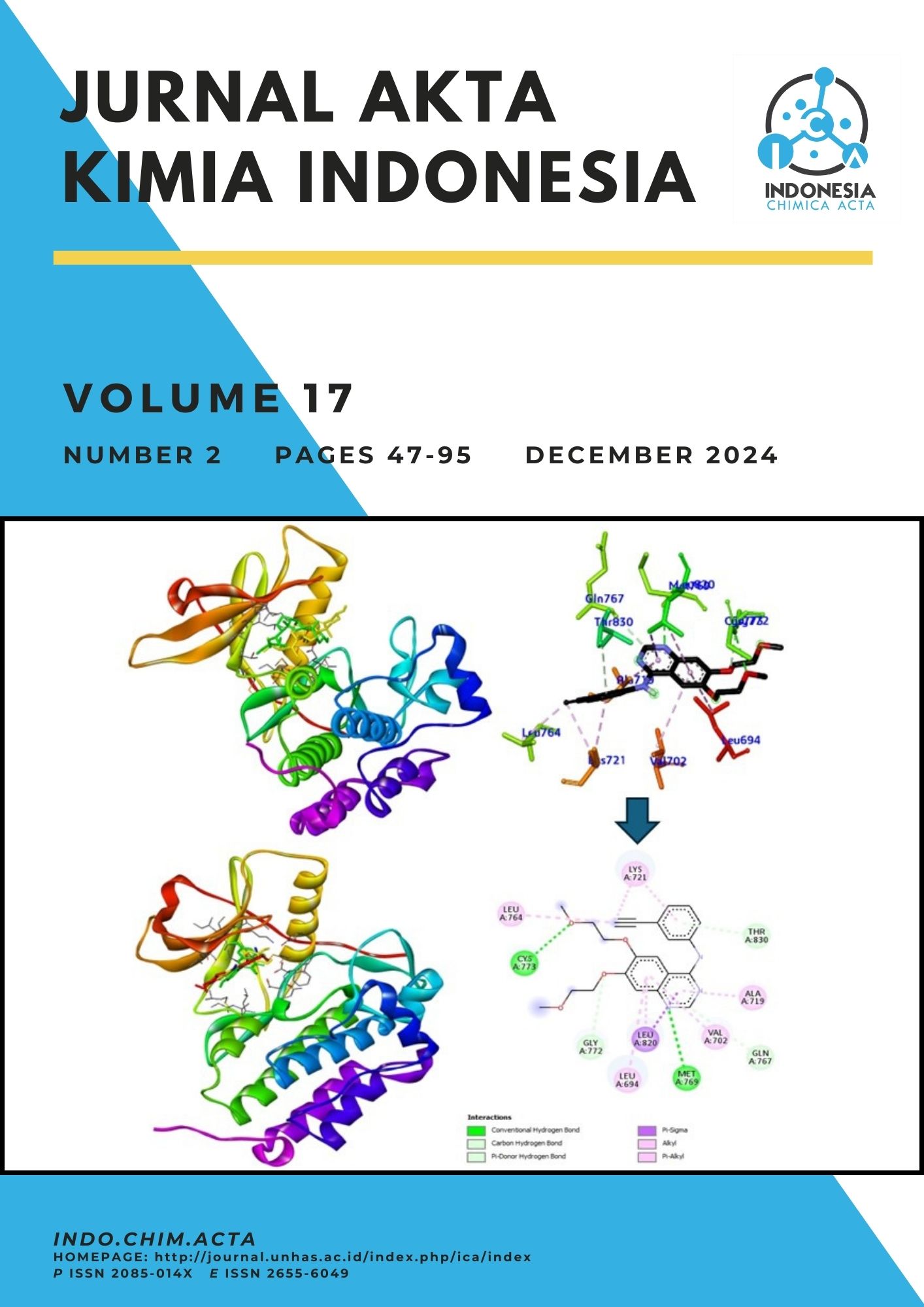In Silico Insight of Natural Compounds in Ageratum Conyzoides L as Anti Breast Cancer Candidate by Molecular Docking Against EGFR
Abstract
The regulation of proliferation and apoptosis in cancer cells, particularly breast cancer, hinges on the control exerted by the epidermal growth factor receptor (EGFR). Naturally derived EGFR inhibitors from natural compounds show significant potential for future advancements. This study aims to assess the efficacy of active compounds found in Ageratum Conyzoides L as EGFR inhibitors. Evaluation involved molecular docking studies of flavonoid, chromene, terpene, sterol, and acid compounds against EGFR using PDB ID 1m17. Additionally, the ADMET properties and drug-like characteristics of the most promising compounds were characterized. Findings reveal that compound C2 (fisetin) exhibits the most favorable binding energy of -8.9 kcal/mol. Fisetin establishes crucial interactions, particularly with the catalytic site at Met765 of the hinge protein. Fisetin also engages in hydrophobic interactions in regions I and II, involving Val702, Leu694, and Leu820. ADMET profiling of fisetin demonstrates favorable attributes, suggesting its potential as a promising anticancer agent based on drug-likeness assessments.
Full text article
Authors
Copyright (c) 2024 Putra Jiwamurwa Pama Tjitda, Tutik Dwi Wahyuningsih, Febri Odel Nitbani

This work is licensed under a Creative Commons Attribution-ShareAlike 4.0 International License.
This is an open access journal which means that all contents is freely available without charge to the user or his/her institution. Users are allowed to read, download, copy, distribute, print, search, or link to the full texts of the articles in this journal without asking prior permission from the publisher or the author.
Jurnal Akta Kimia Indonesia (Indonesia Chimica Acta) operates a CC BY-SA 4.0 © license for journal papers. Copyright remains with the author, but Jurnal Akta Kimia Indonesia (Indonesia Chimica Acta) is licensed to publish the paper, and the author agrees to make the article available with the CC BY-SA 4.0 license. Reproduction as another journal article in whole or in part would be plagiarism. Jurnal Akta Kimia Indonesia (Indonesia Chimica Acta) reserves all rights except those granted in this copyright notice.

